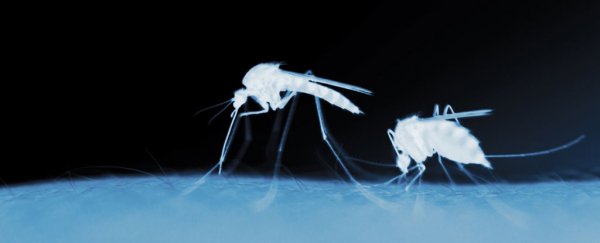Health authorities in the US are baffled by a patient in Utah who appears to have contracted Zika virus through what could be a new channel of infection.
Zika virus is usually spread through mosquito bites (from Aedes aegypti mosquitoes) or through sexual transmission, but in this case neither of those appear to have been involved.
"This case is unusual, The individual does not have any of the known risk factors we've seen thus far with Zika virus," health officer Gary Edwards from the Salt Lake County Health Department told reporters during a news conference.
But although an incident of Zika spreading without mosquitoes or sex is alarming, researchers still don't fully understand what's going on just yet, so there's no need to panic.
The patient, whom Utah health officials say is the eighth Utah resident to be diagnosed with Zika, has since recovered from the virus.
The individual had not travelled to any areas where Zika is common, nor had sex with anybody who was infected (or who had travelled to a Zika area). Further, there is no evidence of Aedes aegypti mosquitoes in Utah, so it's unlikely the patient was infected locally through an insect bite.
So how did this patient get Zika? Well, the most likely explanation looks to be the person's close contact with somebody infected by the virus – acting as a caregiver to an elderly Utah man who had contracted Zika through travel. The elderly man died in June – although it's not yet clear if Zika contributed to his death.
But the fact remains that nobody understands how the caregiver might have contracted Zika from the elderly patient, since the two did not share sexual contact, which is the only way scientists thought the infection could be spread directly from one person to another in the absence of mosquito-borne transmission.
"We don't have any evidence that suggests Zika can be passed from one person to another by sneezing or coughing or kissing or sharing utensils," Thomas R. Frieden, the director of the Centres for Disease Control and Prevention (CDC) told media.
Nor by routine touching or hugging, added CDC incident manager Satish Pillai. The CDC is working with Utah health officials to investigate the case.
Zika has previously been detected in blood, semen, vaginal fluid, saliva, and urine, but while experts thought it required sexual contact for the infection to spread, the Utah case raises the possibility that Zika in rare circumstances might be able to transmit in these fluids outside of sex.
"This raises some interesting questions," said infectious disease specialist William Schaffner from Tennessee. "Was there a needle stick or injury? Or if not, possible contact with other bodily fluid like urine or saliva?"
Adding further to the strange nature of the incident is the unusually high levels of the virus that were in the deceased elderly patient. According to the CDC, his blood showed Zika levels more than 100,000 times higher than seen in other samples of infected people, although it's not yet known what impact this might have had on his transmissibility.
"However, there's a lot we don't know about Zika virus, and we are still doing a lot of investigation into whether Zika can be spread from person to person through contact with a sick person," said Pillai.
But while such non-sexual person-to-person contact could turn out to be a new means by which Zika spreads, health authorities are eager to point out that the risk of contracting the infection this way is incredibly low, with this being the only (potential) documented case so far.
"At this time we don't know if the contact between the new case and the deceased patient played any role in the transmission of the disease," said Edwards. "There is uncertainty about how this new case contracted Zika. But we do not believe that there is risk of Zika transmission among the general population in Utah based on what we know so far."
Until we know more, there's definitely no need to panic, but the mystery serves as a reminder that there's still a lot left for scientists to discover when it comes to Zika virus – and particularly in how the virus is able to spread.
"The new case in Utah is a surprise, showing that we still have more to learn about Zika," said CDC medical epidemiologist Erin Staples in a statement. "Fortunately, the patient recovered quickly, and from what we have seen with more than 1,300 travel-associated cases of Zika in the continental United States and Hawaii, non-sexual spread from one person to another does not appear to be common."
